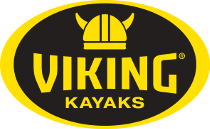Monster snapper in skinny water kayak fishing
10:08PM 30th May 14
"A fat 20 pounder at 9.47kg. Solid and in top condition, but well off the mark for the competition. It’s nose did create lots of comment along the lines of “funny how some fish look like the anglers that catch them!”
Once again the organizers of the recent Taranaki Kayak Fishing Classic have outdone themselves, producing an event that’s even better than the previous. Despite the early rough weather and swell conditions in some areas, and the resulting “rough and tumble” mishaps for some getting launched or back to the beach, kayak anglers I spoke with thoroughly enjoyed themselves in what can now be genuinely classed as a “Classic”.
Another characteristic of this year’s event is the array of trip reports, especially those in video format which portray the true adventure of kayak fishing Taranaki’s rugged coastal and offshore waters. The really cool aspect is that for many anglers it’s not just the lure of big fish, but the excitement of tackling the west coast while having a great bunch of like-minded paddlers to share the adventure with.
From a purely angling perspective there are few events that can compete, especially when it comes to big snapper. Once again simply capturing a fish over the old 20lb mark couldn’t guarantee you a place. This year the top seven snapper were all over 10kg so to be competitive anglers had to be better than lucky, they needed to plan, strategize, and truly hunt the big fish to chase the trophies.
Some of the conditions made for exciting paddling, even when offshore. This chop rolled through at head height making it critical to ensure everything is secure.
Day one blowout
This year our plan was to first chase kingfish then head further out to try for an early tuna. We would target snapper on day two. We’ve had success with this tactic during previous events, especially as the kings are usually less wary because they hadn’t been hunted. Unfortunately, though the location had the usual concentrations of bait fish in the current, the sounder showed they were dispersed in large loosely packed schools. There was no evidence of hoodlums marauding around to corral the bait in anticipation of an early breakfast.
An array of jigs, lures, and softbaits remained untouched confirming this wasn’t to be our morning for landing one of the hardest fish to add to the Grand Slam species list. In fact getting any fish to bite was proving difficult. Snapper were present, but only tiddlers bothered to nibble baits and softbaits. Even the blue cod were refusing our offerings. Time to look for a tuna before the forecasted conditions forced us back to the coast.
As the sun rose higher the wind and swell began to build too. This made the trip out wide fun, but it soon reached a point where conditions meant even if a tuna was hooked landing it was going to be virtually impossible. Drift speeds in winds reaching 30 knots combined with the difficulty of actually boating a fish in the accompanying chop would inevitably mean straightened hooks and lost fish. The decision was made to call it a day and slog our way back to the coast. This was the first “dot day” in a very long time!
Day two snapper tactics
This is where the fishing really began for us, and as a bonus it proved to be no less of an adventure! A very early launch saw us facing the swells in the dark as we paddled out; always a source of excitement on the west coast where you never know if there’s an invisible rogue is stacking up in front of you ready to pummel in some respect. After several kilometers paddling along the coast we repeated the process in reverse with a cautious approach back into shallow waters just outside the surf break. This is where some of the best change-of-light snapper fishing can be found, and again the target was a location that had produced during previous events.

Strike – the braid to leader joint isn’t even through the tip and the snapper were pouncing on the baits
On the mark the sounder showed 5m of water in the troughs, and 7.5m as the biggest swell crests passed through – just safe enough to anchor and deploy the berley. This is another angling situation where kayaks can have distinct advantages over larger craft. It’s not just that we’re sneaking into the shallows with little fuss and noise, it’s also about our craft being able deal with steep swells without being pushed or surfed into the danger zone. Provided the waves don’t actually break on us we’re able to comfortably work such areas and target fish that’re actively feeding throughout the surge zone.
With such shallow water and with a strong current running there was little point in putting the berley on the anchor as this will often put us on a different line to the berley trail – especially as we were running long ropes to minimize the kayaks surging backwards on each swell. In this case we opted to tie the berley bags to the side handles using a quick release knot so we could drift our baits directly down the trail.
Under normal circumstances I would put the berley a meter or two below the side of the kayak on a light cord. This is for safety reasons: if a large predator turns up to have a look it can nose the bag around below the kayak rather than right beside me. In this situation though, the shallow conditions and heavy surge generated with each swell made it more prudent to hold the berley at the side of the kayak, but to be ready for a quick release if something undesirable turned up.

When on anchor and fishing shallow it’s imperative not to give too much line. Try and keep line angles steep to reduce the chance of getting reefed.
Another change I made for the mornings fishing was to up the strength of my fishing tackle. Battling hard fighting snapper in shallow rock and reef areas makes it imperative to keep the fish close, or risk a reefing as line angles change and the fish runs around structure. Most of my fishing around the country is done on the drift in deeper water, and I have great success using fine gauge hooks on lighter tackle. This gives better bait presentation (baits look more natural without heavy hooks and stiff trace influencing their drift) and makes setting hooks much easier.
It’s a small thing, but detail matters when fishing to the max. Upping from a fine gauge hook to a heavier one with a welded eye makes it possible to apply maximum pressure to fish without risking trace damage.
During this Taranaki session though, I’m anchored in the shallows making it impossible to track after the fish and stay on top of it. The only solution (especially given the size of the swell) was to beef everything up and run a heavier drag. This makes it possible to keep most fish on a shorter leash, not letting them get enough angle to wrap the line round a rock. The recipe for this occasion was:
- 15kg braid main line with a 6m length of 18kg fluorocarbon as leader
Beefing up the line and leader allows for heavier drags, especially as the big swells can create enough pressure to pop lighter gear. Running a long abrasion resistant fluorocarbon leader helps keep braid away from volcanic rocks that can quickly wear and destroy fine braid lines.
- 10kg Black Magic clip swivel for rapid rig changes
I normally find the 4-8kg version of this clip swivel up to most challenges (I’ve even caught kings over 20kg on them) but in this case I want maximum strength under shock loads while still making it easy to change rigs. This can be critical when dealing with big fish in rough conditions and there’s a need to get them safely stowed as quickly as possible.
- 37kg trace linking a pair of 7/0 Trokar Big Nasty hooks with welded eyes
This trace is strong enough to allow the use of a loop to link to the clip swivel in shock-load situations, is very abrasion resistant, and provides excellent bite resistance. It also ties exceptionally well to the heavier gauge hooks using a proper snell knot so everything is aligned correctly for good hook sets. Finally, using a welded-eye hook eliminates any sharp edges where the trace passes through the eye of the hook. Though not often a problem with properly tied rigs, I want every performance edge I can get in these situations.
The recipe for Taranaki snapper – make it heavier, make it stronger, and hang on because these fish pull hard.
It’s all action!
With the berley deployed, and after waiting 10 minutes while observing the swells and current (making sure the situation and conditions were safe enough to fish), I sent the first whole pilchard on its way. I didn’t cast the bait, simply dropped it in the water beside the kayak and watched it drift out of sight alongside the flecks of berley. Just as the leader knot passed through the rod tip there was the faintest hesitation before the line absolutely ripped off the reel. It was then a scramble to grab the spool, close the bail to stop the line hemorrhaging off the reel, and to set the hook. It was all on!
What followed was huge fun as snapper pounced on baits just below the kayak. In fact no pilchard drifted more than 10-15m, and those that did caught smaller fish. It seemed as though all the big fish were lurking immediately below the kayaks wanting first dibs on anything edible that hit the water. This included Milkey’s over 10kg snapper, and mine that didn’t quite make double digits even though it passed the old 20lb mark.
With the necessary snapper on board the decision was made to head further out and see if we could add further species to our list. Considerably better conditions compared to the previous day allowed us to add tuna and kahawai to the tally, but unfortunately the kingfish and trevally still eluded us. Not that it mattered, the adventure of fishing the Taranaki coat, and the seas off Cape Egmont kept us enthralled during another awesome Taranaki Kayak Fishing Classic.









